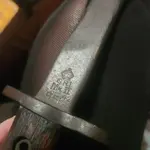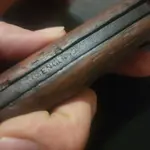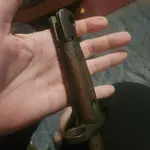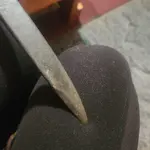Agree with the ID, but I have some additional comment.
The ‘42’ is the year of manufacture, but I don’t think the ‘7’ is for July. I believe it's an indication that this is 1907 pattern. That pattern was originally a 17 inch blade with a fuller on both sides (produced up until 1941) and then modified as the Mk II with the blade shortened to 12 inches and no fullers.
The ‘RFI’ is indeed for the ‘Rifle Factory Ishapore’ in India, who produced it. Quite why it’s also stamped ‘England’ is a bit of a mystery but I can’t see that being from an importer. Those kinds of marks are required to indicate actual country of manufacture. My best guess is that the steelwork was originally from one of the English manufacturers and the bayonet was ‘finished’ or refurbished by RFI. They were not only a primary manufacturer but also a major refurbisher of British colonial bayonets until independence in 1947 and thereafter for use by the Indian army.
Value-wise, you could probably expect to pick one up (over here) with the scabbard at dealer prices from around £60 - £100 depending on condition. Rather less in that condition without the scabbard.







